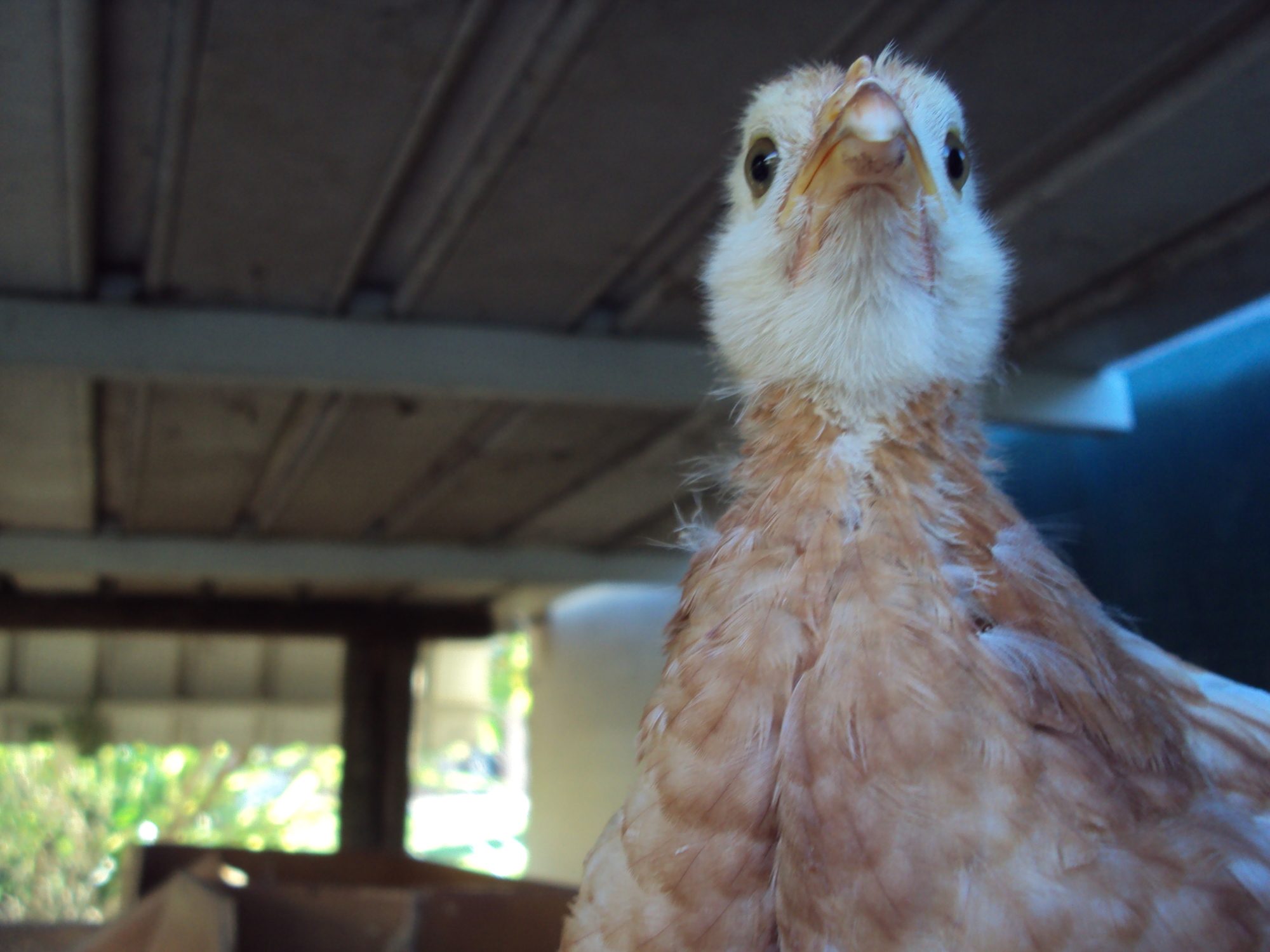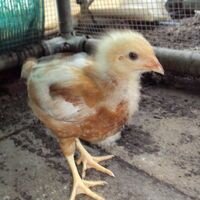I know many people have accomplished these things with their chickens, so this is mainly for the people who are relatively new to chickens. I have completed all these levels myself with at least one chicken.
How to Train Your Chicks
Have you ever wondered what it would be like to have chickens coming when you call them, instead of running away at the sound of your footsteps? It isn’t as difficult as it sounds – training a hen to respond to certain words with actions. In fact, many chicken owners train their hens ‘accidentally’ – calling “chook chook” each evening as they dish out grain and scraps. This is just a basic example, though; chickens will react to sentences and longer phrases as well.
Where do I Start?
The first thing I want to address here is that chickens are not stupid! They all have their own personalities and will respond in different ways to different things. Some will learn easily, while others completely ignore you or simply run for the hills. If you want the chickens to become familiar with you, it’s best to start while they are very young, from day-old chicks to two-weeks old. The younger the chicks, the more likely that they’ll regard you as a mother. If they do, they will be probably be more cooperative when you train them.

Training Chicks – Starting Up
In order to train effectively, you need to train the chicks separately (with one exception, see Training Levels, below).
Before you try any basic commands, the chick must be familiar with you and calm in your presence. Always move slowly when around young chicks (and adult hens, for that matter) and speak quietly to them. If the chick runs away when it sees you or hears your voice, it is NOT familiar with you. Take it slowly. When we bought chicks for the first time, they were treated kindly and gently and within the day, they were sleeping quietly in my lap! Later on I was given another chick, and the other hens did not accept it into the flock. As a result it spent a lot of time away from them and regarded me as a ‘mother’ (she also thought she was a rabbit, but that’s another story).
Level 1: Recognition of phrase and/or voice, e.g. “chook chook” accompanied by food. Multiple chickens. Chicks/hens.
This is applicable to hens and chicks alike. You can use any sound you like - from your own voice to rattling a can full of coins or uncooked rice. It's very easy to do; in fact you are probably already doing it with your chickens. Every time I even click my tongue, the hens run out to see what treats I have for them.

Level 2: Response to name and phrase, e.g. ‘Blackie, come here!’. Single chicken. Chicks.
For a chick to be familiar with any given name, it needs to hear that name often. Spend a few minutes with it at least twice a day, calling it by its name and offering it food. After about two days, my chick, whom I named ‘Charity’, came running whenever she heard “Charity, come here!”. This is where I made a mistake. Soon Charity became tired of running to me when she was not given any food as a reward. I had to start all over again, giving her a bit of food every single time. The only way to a chicken’s heart is through food, as I soon learned! Eventually, however, the name and command became so embedded in Charity’s brain that she came without expecting food. Use the chick’s name whenever you get the opportunity. Now Charity is a full-grown laying hen, and all I have to do is say “Charity…” and she comes bolting out of the coop.
Level 3: Responding to phrase with jumping action, e.g. “Jump”, “Jump, Blackie!”. Single chicken. Chicks/hens.
If you want this to work, you need to use a treat that the chicken really likes. If you just use regular commercial feed for training, the chicken is more likely to lose interest and you will have wasted your time. Hold a treat (e.g. a mealworm) between your fingers, making sure the chicken will have to jump in order to reach it. Tell it to jump and it will. Of course, with any luck, your chicken will complete 'Level 3' without you even trying.
Level 4: Responding to phrase with halting action, e.g. “Stop, Blackie!”. Single chicken. Hens.
The reason this level is better for hens is because hens are mature and ready to mate. Therefore, often when you approach them from behind they will squat down, as if you were a rooster. You can use this to your advantage. If a hen is running away from you, call "Stop!" before reaching down and quickly grabbing her. Do this whenever she runs away from you. Eventually she will realise what the word ‘Stop’ preludes. I trained one of my hens and now if I call “Stop!” from about 4 metres away, she will squat down and let me walk over and pick her up.
Level 5: Responding to phrase with more complex jumping action, e.g. “Up, Blackie!”. Single chicken. Chicks/hens.
In order for this level to work, the bird needs to be familiar and comfortable with you. Sit on the ground and call your chicken. If you have completed Level 2, she should come to you. Make sure you have a favourite treat and hold it in your lap. Say, “Up, (insert name here)!” as the chicken tries to get at the treat. Move the treat away from her slightly as she reaches for it. Before long, she will have to climb onto your lap in order to reach the treat. Praise her and try it again. It will take longer than the other levels but it does work. Charity climbs into my lap on command, treat or no treat, and likes to settle down for a cuddle.

Don't forget that the tone of voice you use will affect the results you get. If you say, "Up, Blackie!" angrily, your chicken might get a little confused. Use a happier tone for persuading/praising your chicken, and a sterner tone for scolding.
And remember not to overdo it, or your chicken will get bored and frustrated. A few minutes per session is plenty.
Have fun training your chickens! Let me know if there's anything you think should be added.
Read about more advanced training here: Advanced Training Techniques
- Nutcase

How to Train Your Chicks
Have you ever wondered what it would be like to have chickens coming when you call them, instead of running away at the sound of your footsteps? It isn’t as difficult as it sounds – training a hen to respond to certain words with actions. In fact, many chicken owners train their hens ‘accidentally’ – calling “chook chook” each evening as they dish out grain and scraps. This is just a basic example, though; chickens will react to sentences and longer phrases as well.
Where do I Start?
The first thing I want to address here is that chickens are not stupid! They all have their own personalities and will respond in different ways to different things. Some will learn easily, while others completely ignore you or simply run for the hills. If you want the chickens to become familiar with you, it’s best to start while they are very young, from day-old chicks to two-weeks old. The younger the chicks, the more likely that they’ll regard you as a mother. If they do, they will be probably be more cooperative when you train them.
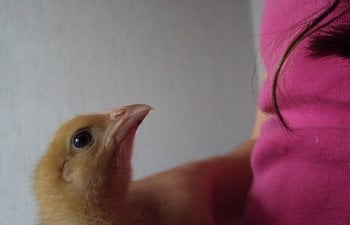
Training Chicks – Starting Up
In order to train effectively, you need to train the chicks separately (with one exception, see Training Levels, below).
Before you try any basic commands, the chick must be familiar with you and calm in your presence. Always move slowly when around young chicks (and adult hens, for that matter) and speak quietly to them. If the chick runs away when it sees you or hears your voice, it is NOT familiar with you. Take it slowly. When we bought chicks for the first time, they were treated kindly and gently and within the day, they were sleeping quietly in my lap! Later on I was given another chick, and the other hens did not accept it into the flock. As a result it spent a lot of time away from them and regarded me as a ‘mother’ (she also thought she was a rabbit, but that’s another story).
Level 1: Recognition of phrase and/or voice, e.g. “chook chook” accompanied by food. Multiple chickens. Chicks/hens.
This is applicable to hens and chicks alike. You can use any sound you like - from your own voice to rattling a can full of coins or uncooked rice. It's very easy to do; in fact you are probably already doing it with your chickens. Every time I even click my tongue, the hens run out to see what treats I have for them.
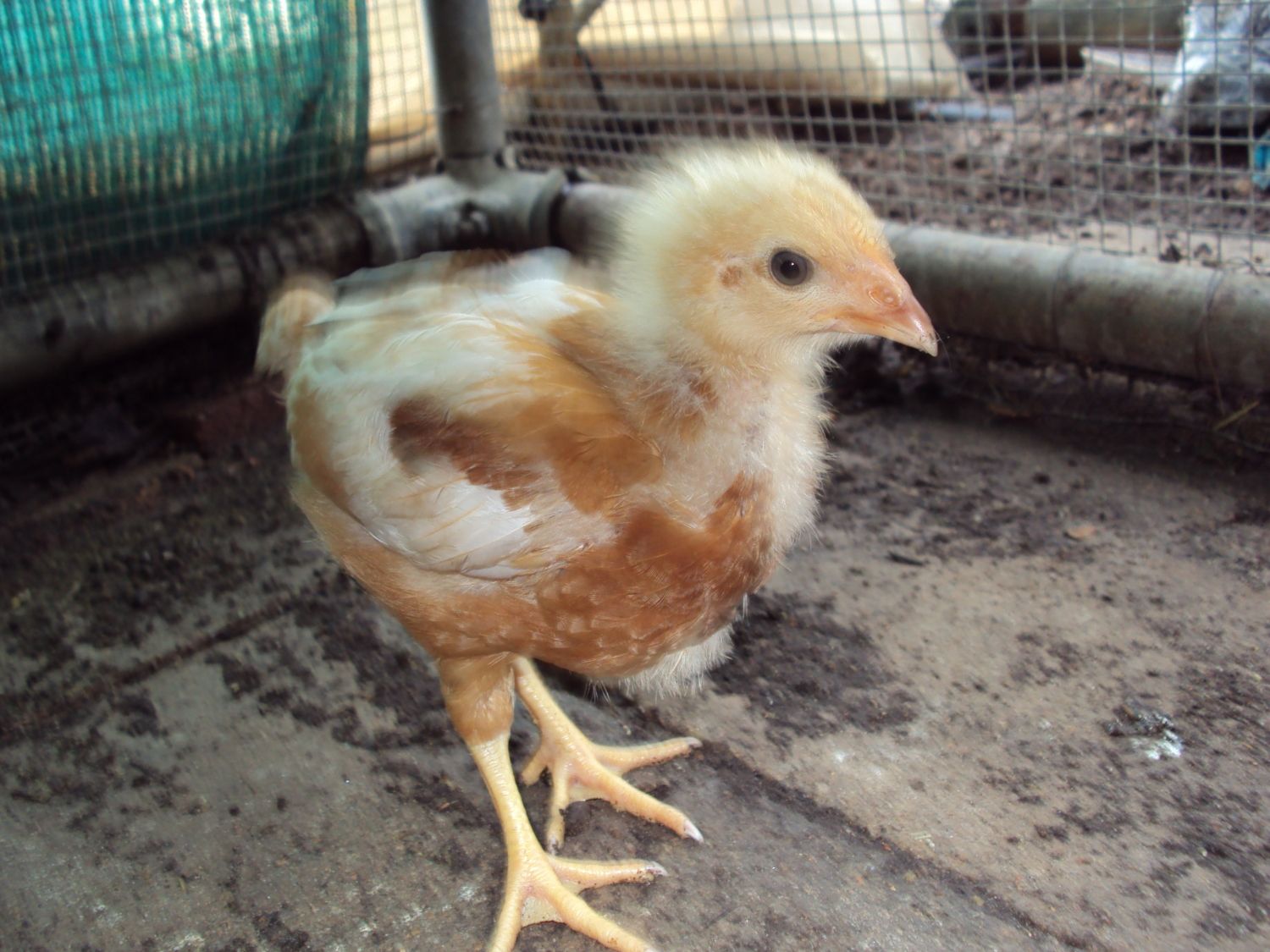
Level 2: Response to name and phrase, e.g. ‘Blackie, come here!’. Single chicken. Chicks.
For a chick to be familiar with any given name, it needs to hear that name often. Spend a few minutes with it at least twice a day, calling it by its name and offering it food. After about two days, my chick, whom I named ‘Charity’, came running whenever she heard “Charity, come here!”. This is where I made a mistake. Soon Charity became tired of running to me when she was not given any food as a reward. I had to start all over again, giving her a bit of food every single time. The only way to a chicken’s heart is through food, as I soon learned! Eventually, however, the name and command became so embedded in Charity’s brain that she came without expecting food. Use the chick’s name whenever you get the opportunity. Now Charity is a full-grown laying hen, and all I have to do is say “Charity…” and she comes bolting out of the coop.
Level 3: Responding to phrase with jumping action, e.g. “Jump”, “Jump, Blackie!”. Single chicken. Chicks/hens.
If you want this to work, you need to use a treat that the chicken really likes. If you just use regular commercial feed for training, the chicken is more likely to lose interest and you will have wasted your time. Hold a treat (e.g. a mealworm) between your fingers, making sure the chicken will have to jump in order to reach it. Tell it to jump and it will. Of course, with any luck, your chicken will complete 'Level 3' without you even trying.
Level 4: Responding to phrase with halting action, e.g. “Stop, Blackie!”. Single chicken. Hens.
The reason this level is better for hens is because hens are mature and ready to mate. Therefore, often when you approach them from behind they will squat down, as if you were a rooster. You can use this to your advantage. If a hen is running away from you, call "Stop!" before reaching down and quickly grabbing her. Do this whenever she runs away from you. Eventually she will realise what the word ‘Stop’ preludes. I trained one of my hens and now if I call “Stop!” from about 4 metres away, she will squat down and let me walk over and pick her up.
Level 5: Responding to phrase with more complex jumping action, e.g. “Up, Blackie!”. Single chicken. Chicks/hens.
In order for this level to work, the bird needs to be familiar and comfortable with you. Sit on the ground and call your chicken. If you have completed Level 2, she should come to you. Make sure you have a favourite treat and hold it in your lap. Say, “Up, (insert name here)!” as the chicken tries to get at the treat. Move the treat away from her slightly as she reaches for it. Before long, she will have to climb onto your lap in order to reach the treat. Praise her and try it again. It will take longer than the other levels but it does work. Charity climbs into my lap on command, treat or no treat, and likes to settle down for a cuddle.
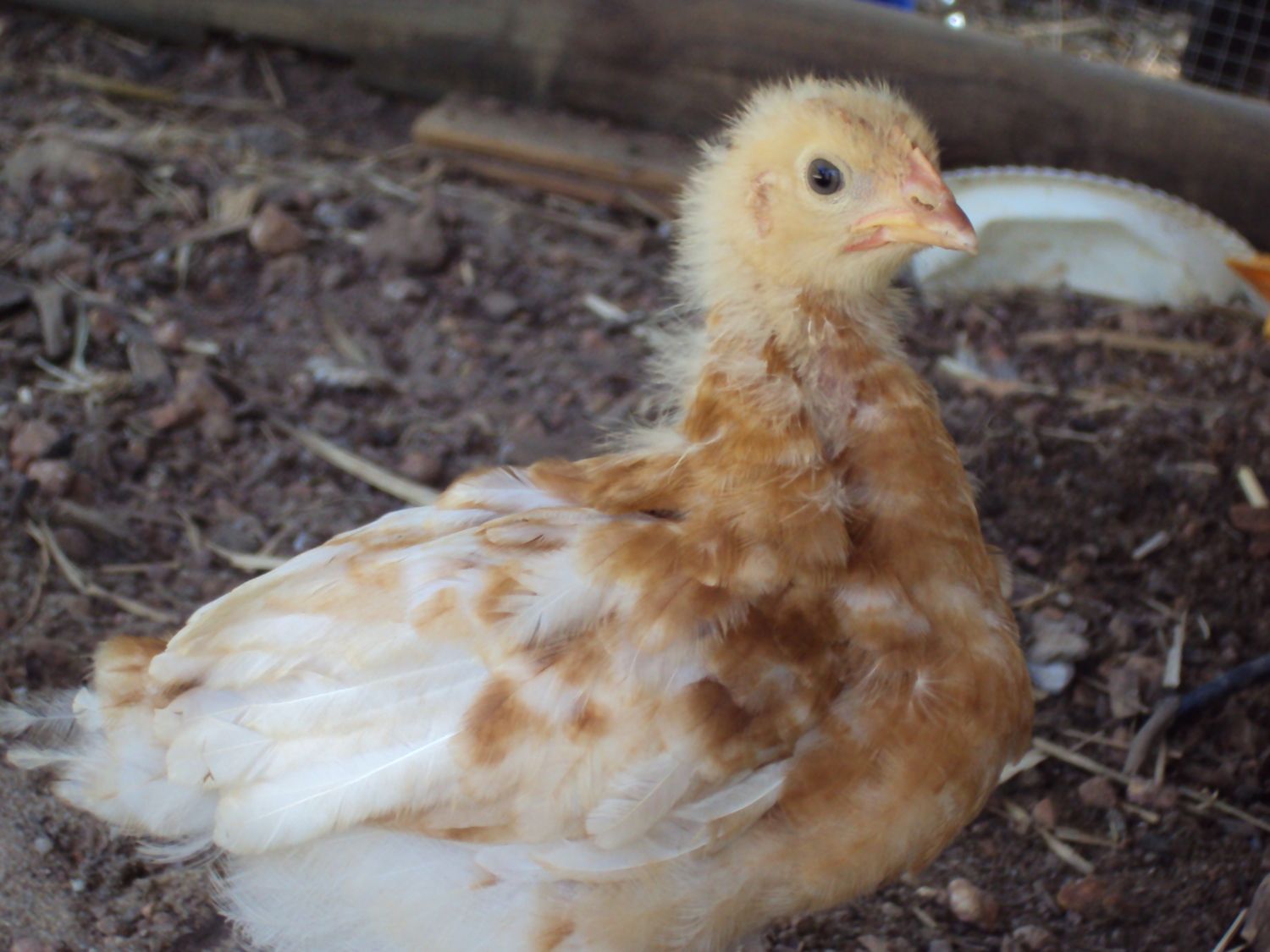
Don't forget that the tone of voice you use will affect the results you get. If you say, "Up, Blackie!" angrily, your chicken might get a little confused. Use a happier tone for persuading/praising your chicken, and a sterner tone for scolding.
And remember not to overdo it, or your chicken will get bored and frustrated. A few minutes per session is plenty.
Have fun training your chickens! Let me know if there's anything you think should be added.
Read about more advanced training here: Advanced Training Techniques
- Nutcase
